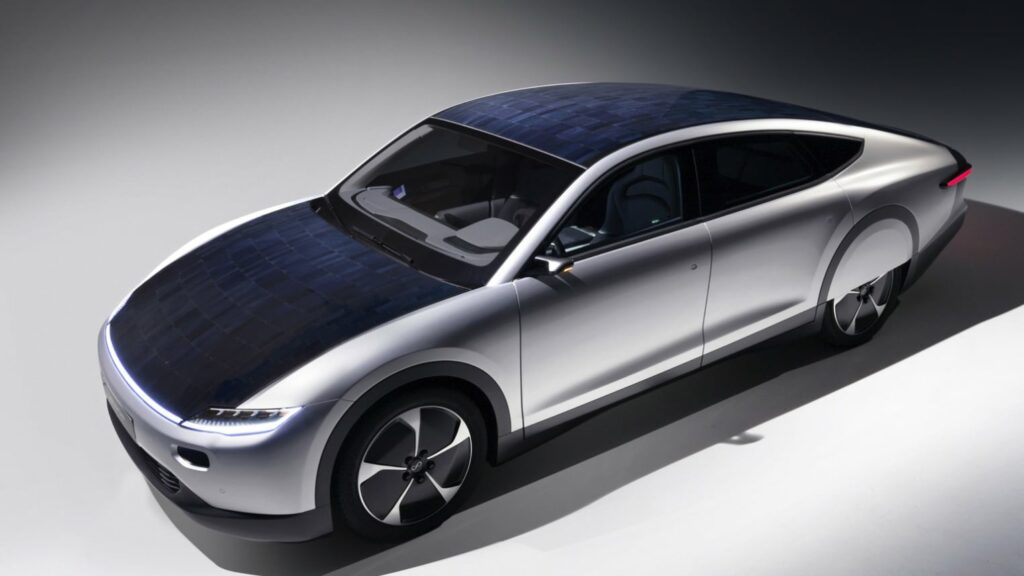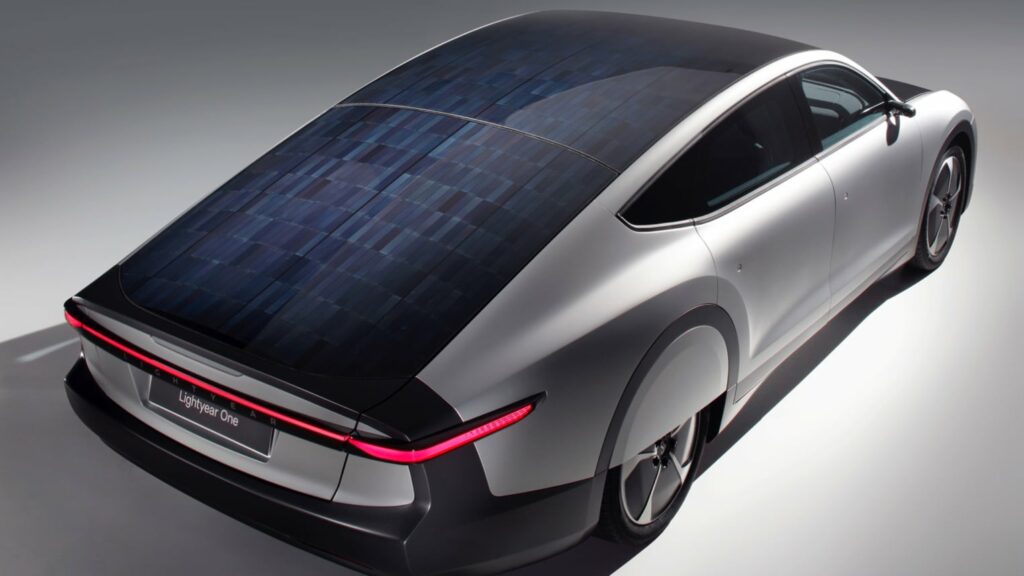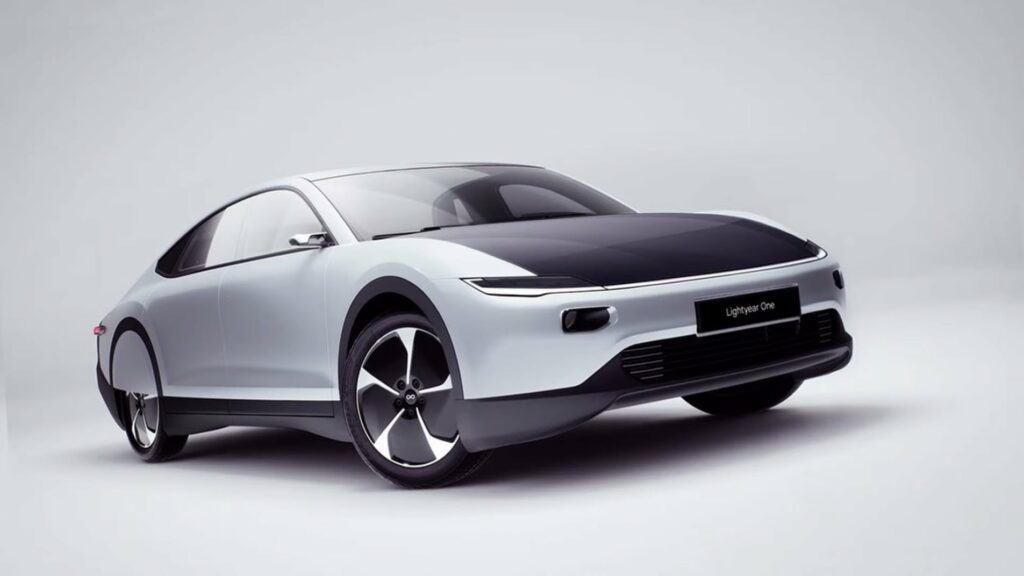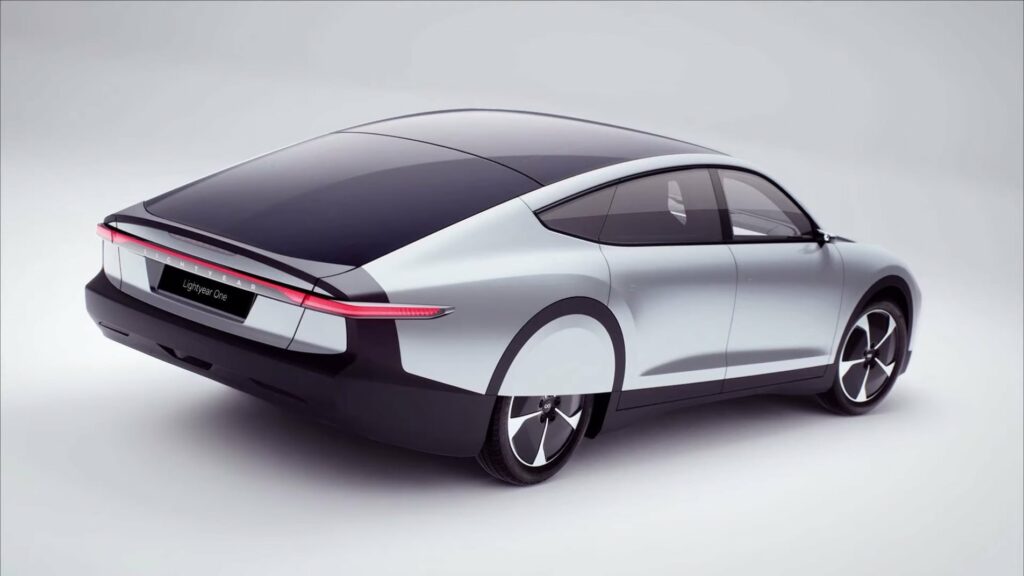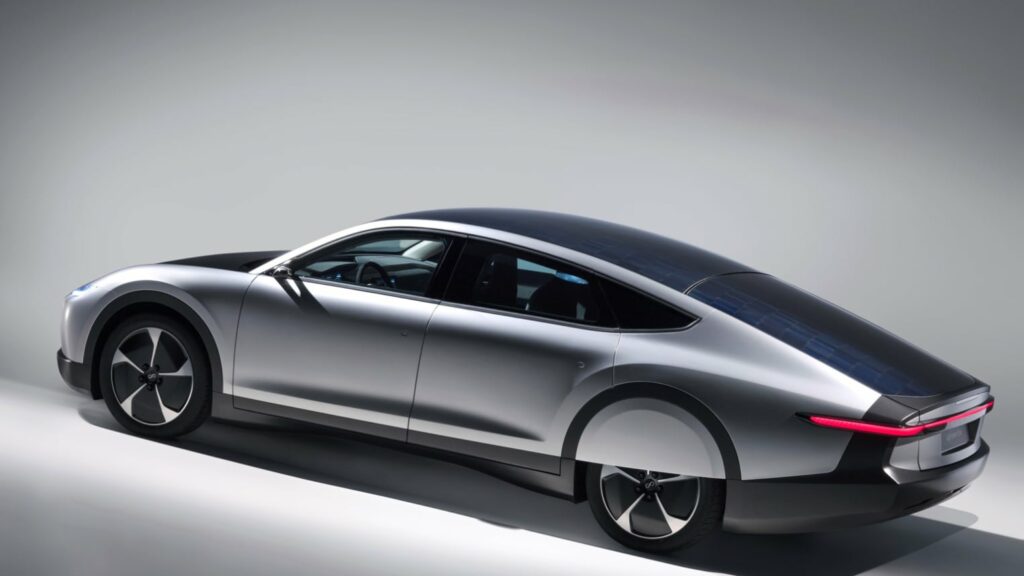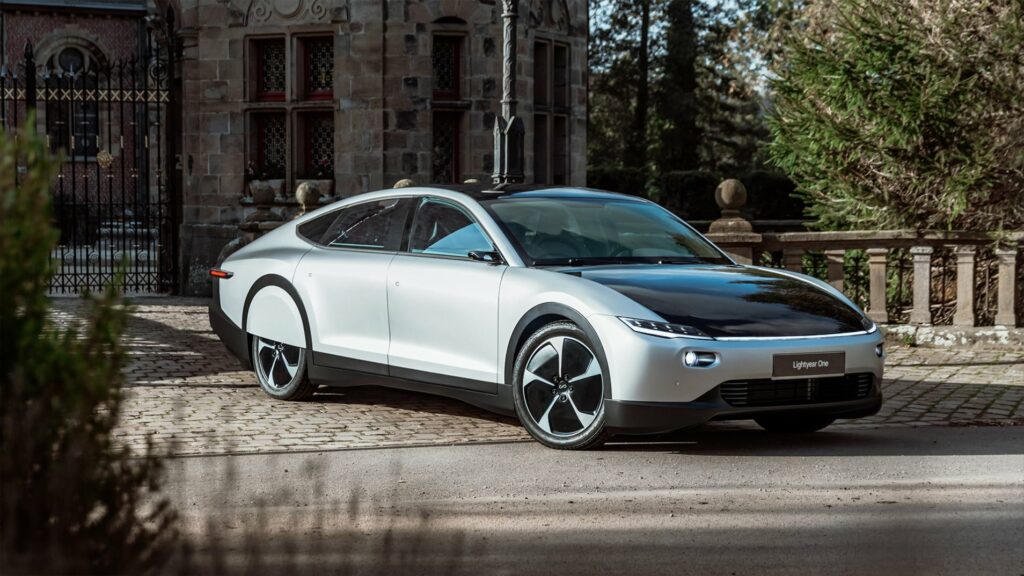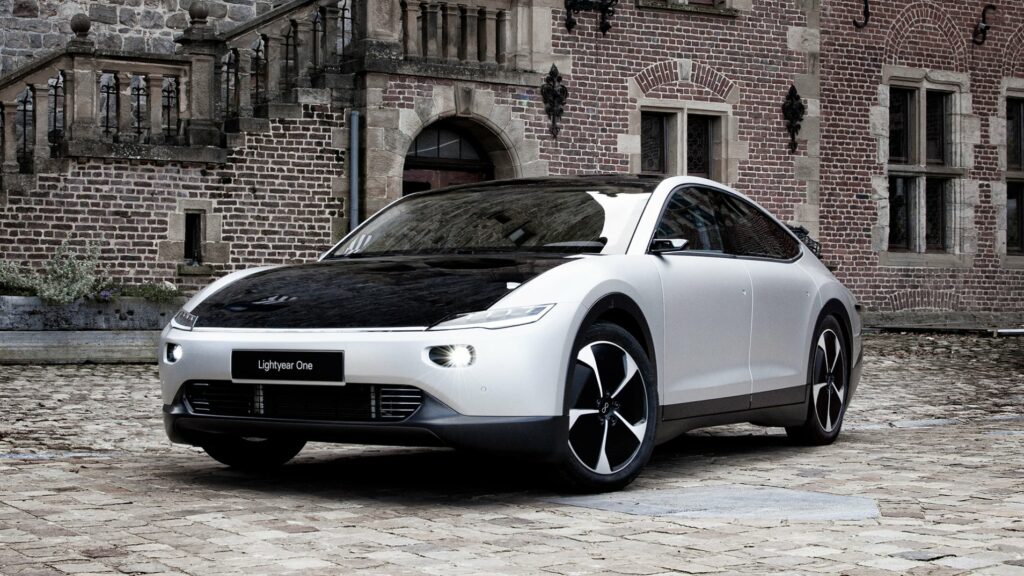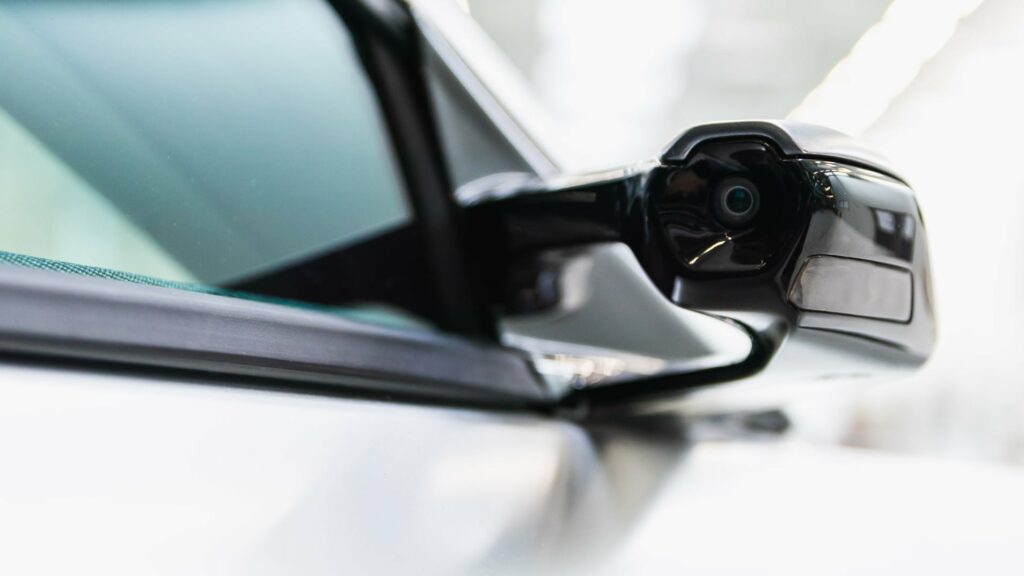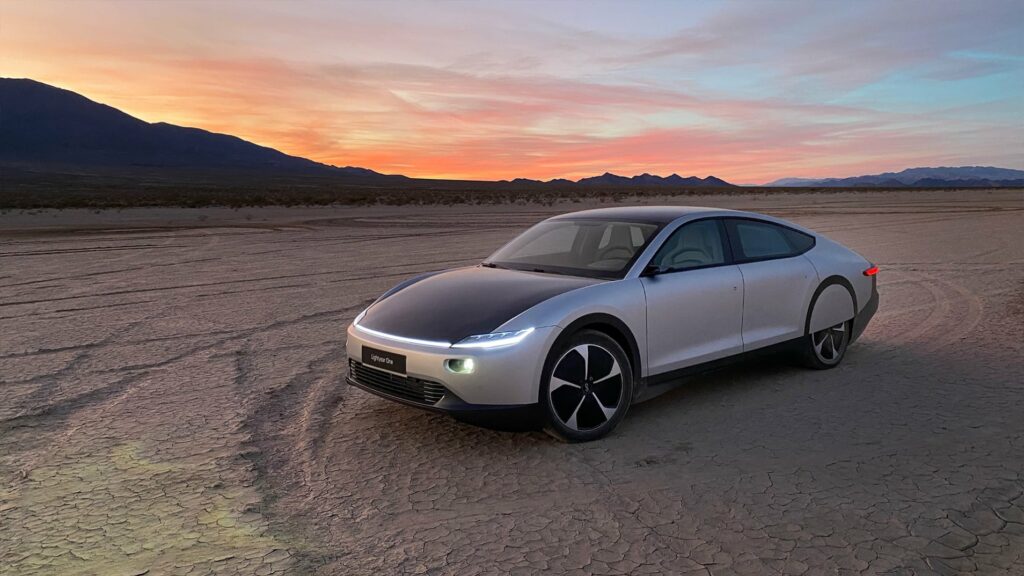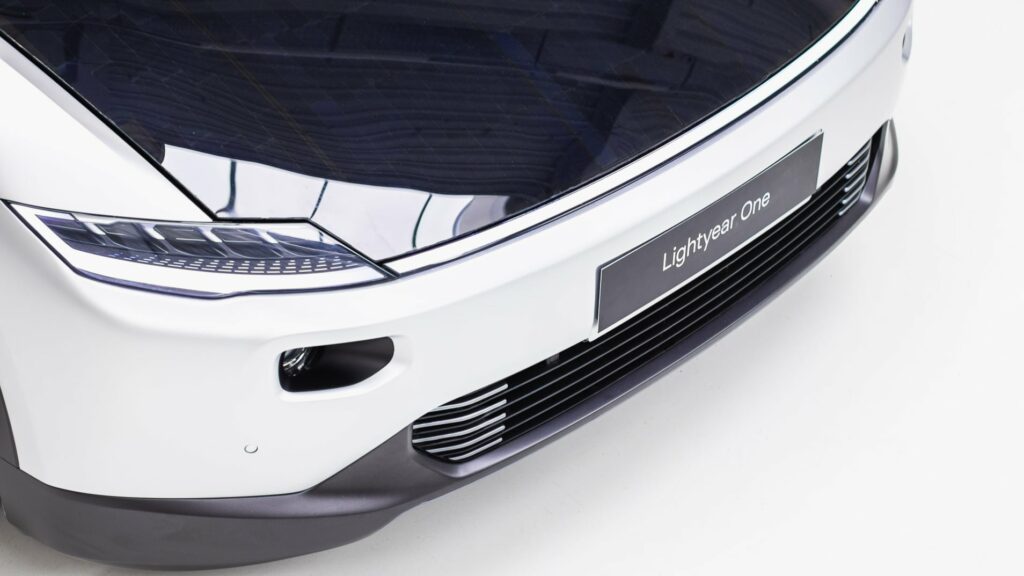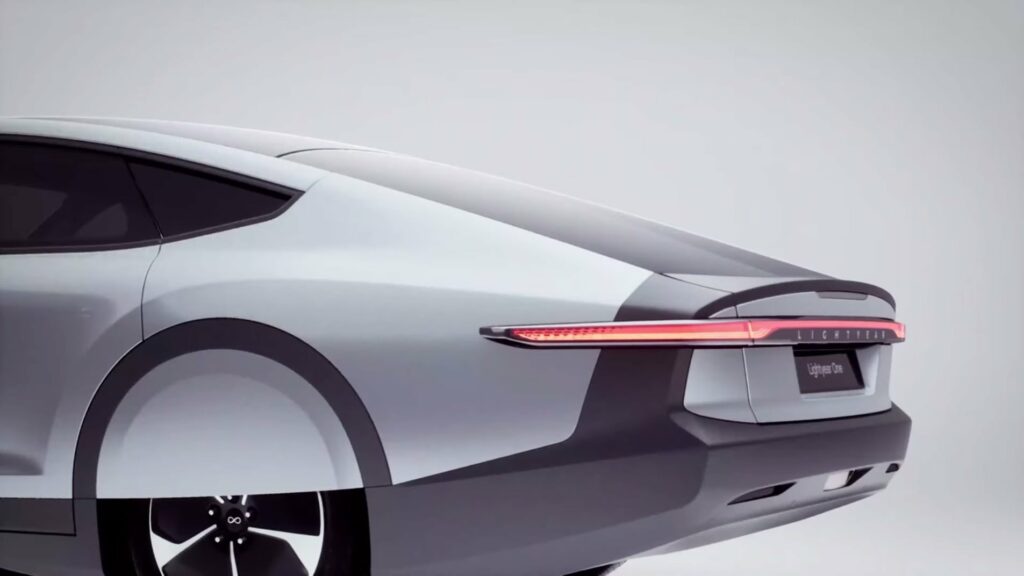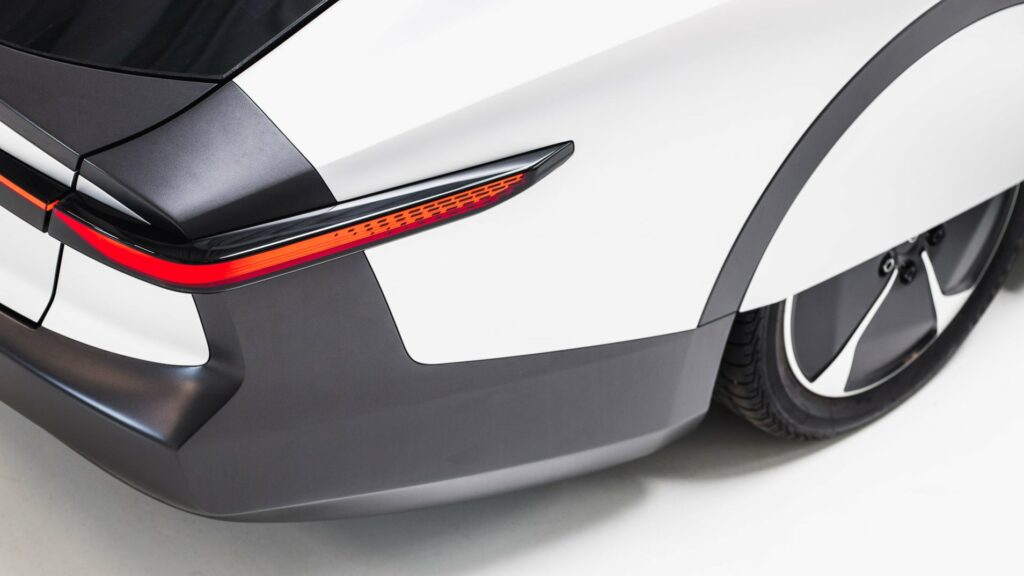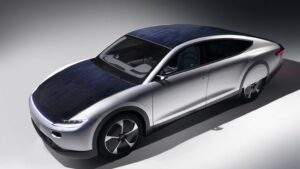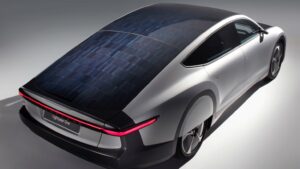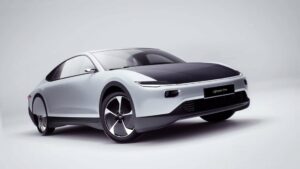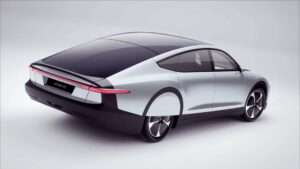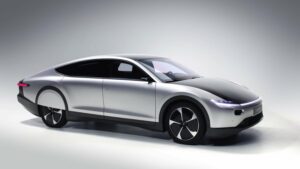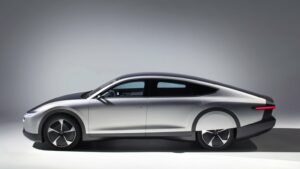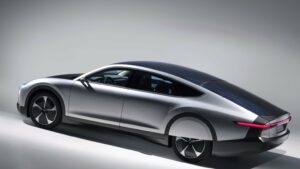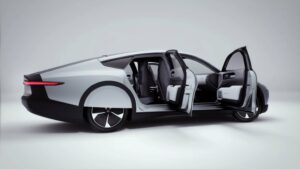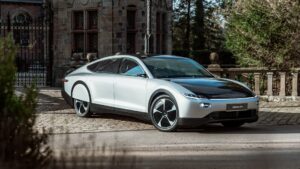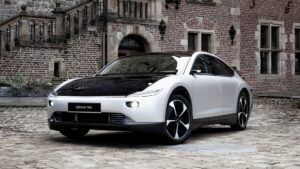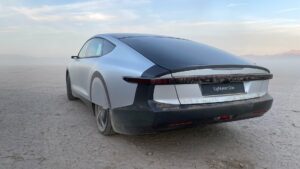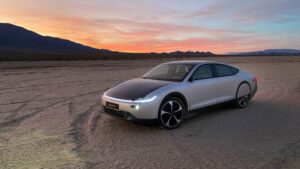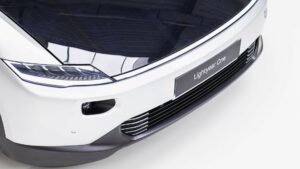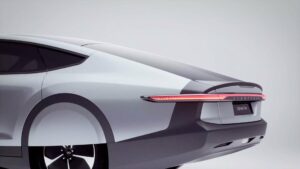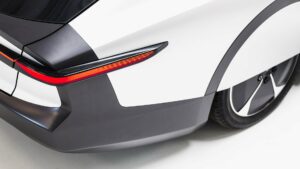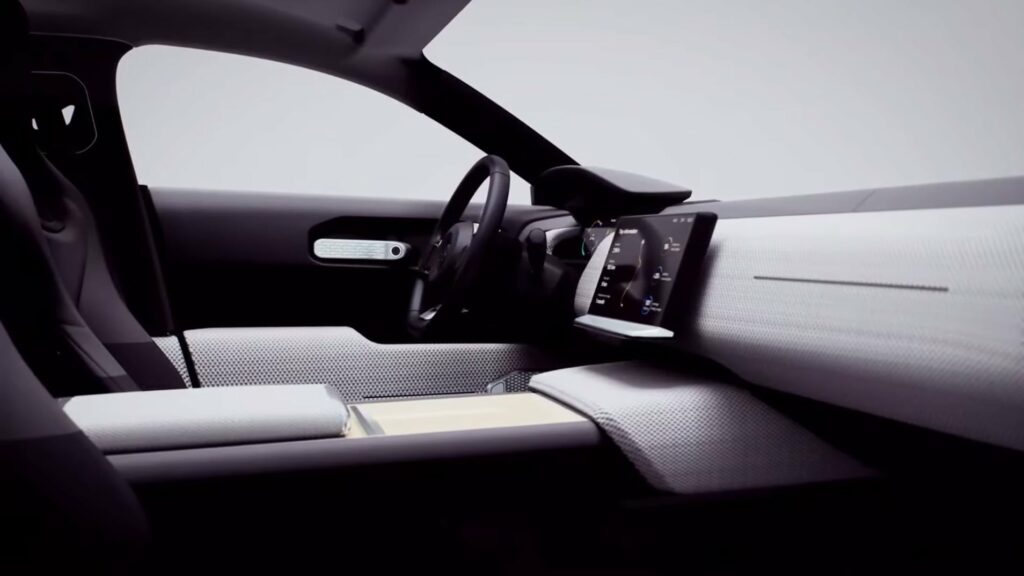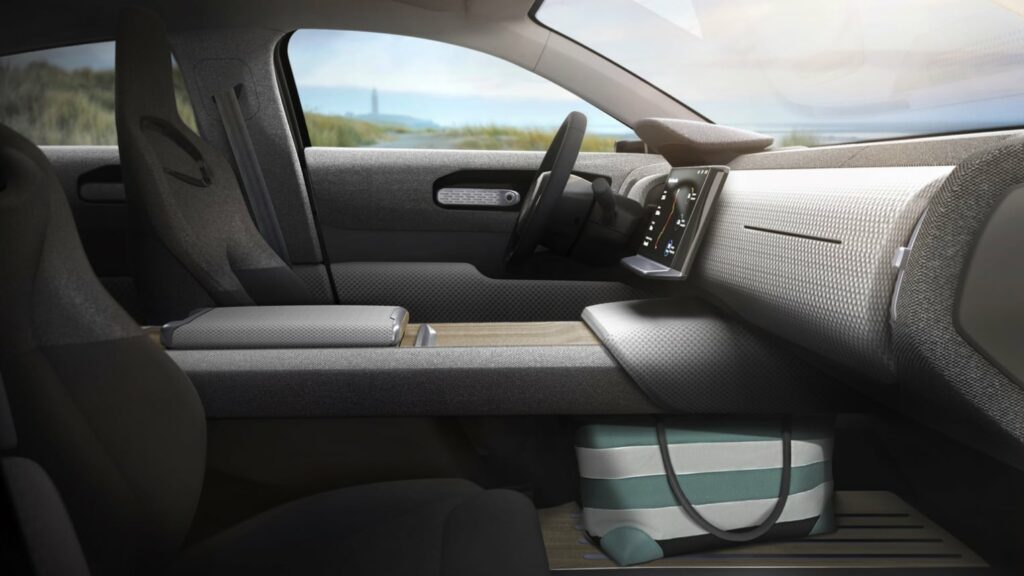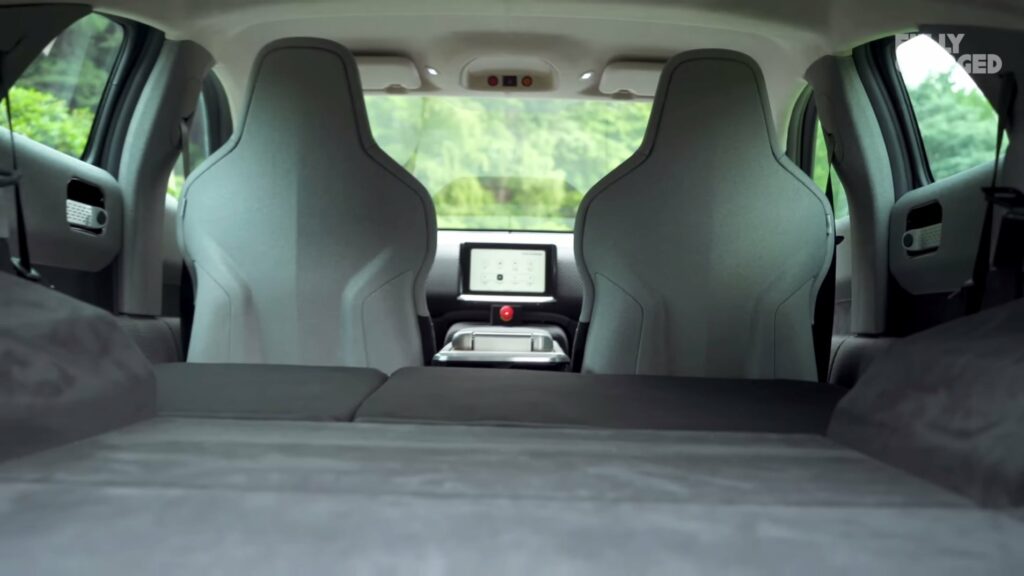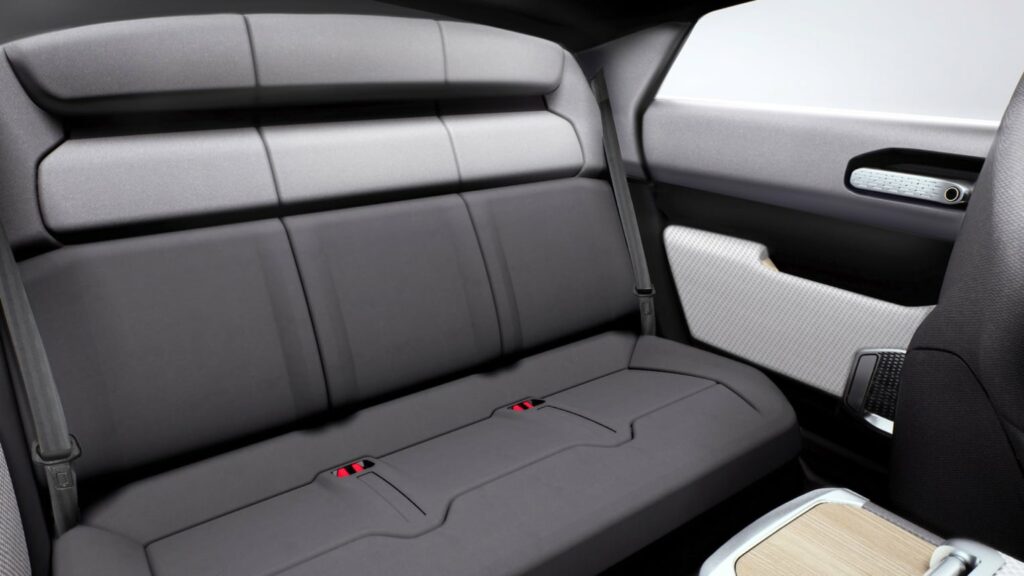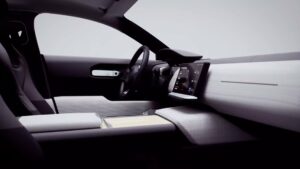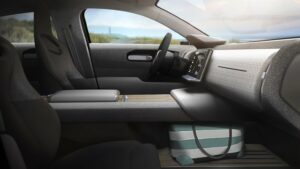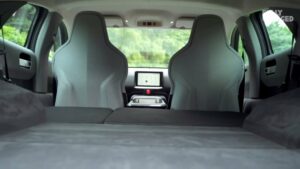The Lightyear One is an all-electric vehicle with a body covered with solar panels generating energy, which is accumulated in the batteries and provides the electric car with a certain driving range. This is Lightyear’s first mass-produced electric car released as a complete consumer product.
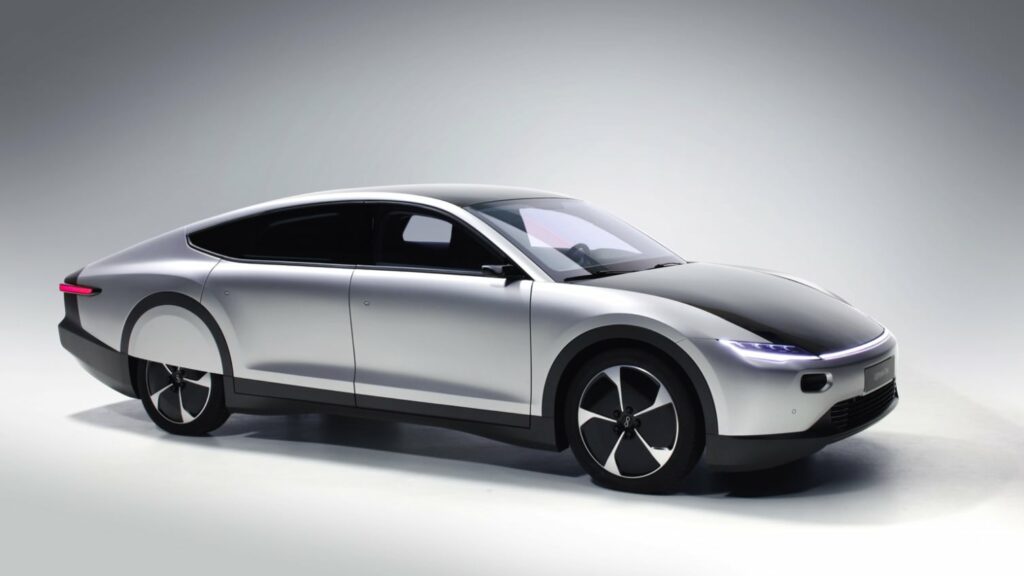
The electric car has four independent electric motors, one at each wheel, which provide not only all-wheel drive but also a more rational distribution of torque with minimal energy loss between the battery and the motors. With the combined efforts of all four motors, the electric car accelerates to 100 km/h in 10 seconds.
Lightyear One is equipped with a 60 kW⋅h battery pack that gives the electric car a range of 725 km on the WLTP cycle. The electric car can be charged with 3.7 kW AC power (one phase), three-phase AC power at 22 kW, and at fast DC charging stations with power up to 60 kW. Battery recharge rates for each source are 35, 209, and 507 miles per hour, respectively.

Special mention should be made of the car’s ability to be charged by the solar panels covering the body. According to the company, with their help, in good sunny weather the electric car replenishes the range by 12 km every hour, in winter these figures drop to 10 km.

The design and architecture of the car are designed with absolute efficiency in mind. Lightyear engineers managed to find a balance in the use of lighter materials such as aluminum and carbon fiber, while maintaining strict safety standards, resulting in a car that is quite light, consumes minimal energy, and has exceptional range.
The main design feature of Lightyear One is that its roof and hood are covered by 5m2 of embedded solar cells in a protective glass so strong that an adult could walk on them. And unlike conventional solar panels, the Lightyear One cells work independently. This means that even if part of the roof or hood is in shadow or blocked from the sun, the rest of the surface continues to effectively generate solar energy. There’s no need to worry about possible overheating of the body, as its “solar” surfaces are designed to withstand high temperatures while charging without loss of efficiency.
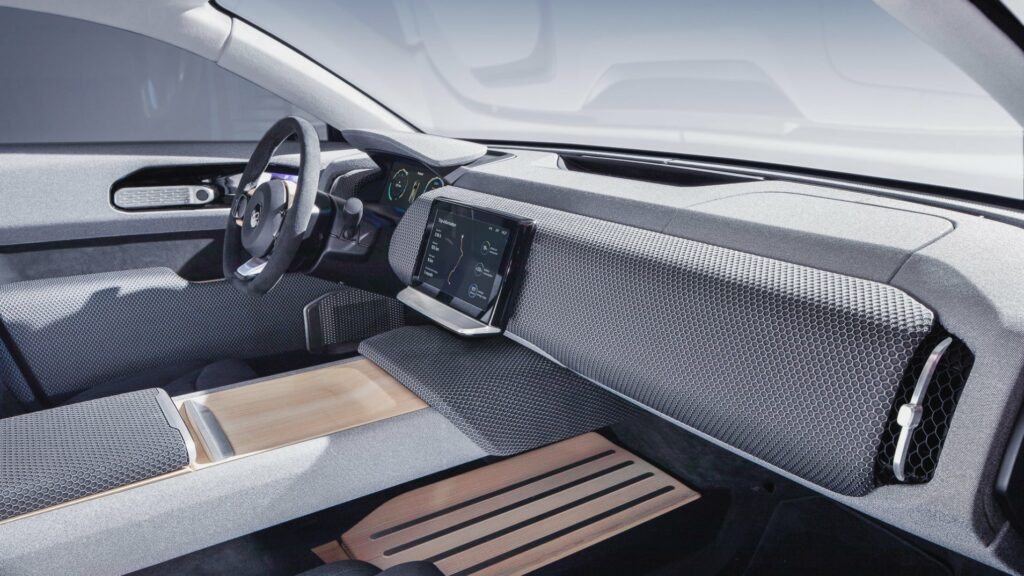
Inside, the car offers classic 5-seat seating, providing plenty of room for all passengers to sit comfortably, even despite its low body profile and seemingly limited headroom.
| Performance | |
| Acceleration 0 – 100 km/h | 10.0 sec |
| Top Speed | 150 km/h |
| Electric Range | 575 km |
| Total Power | 100 kW (136 PS) |
| Total Torque | 1200 Nm |
| Drive | AWD |
| Battery and Charging | |
| Battery Capacity | 60.0 kWh |
| Battery Useable | 60.0 kWh |
| Europe | |
| Charge Port | Type 2 |
| Port Location | Rear Side – Right |
| Charge Power | 22 kW AC |
| Charge Time (0->575 km) | 3h15m |
| Charge Speed | 170 km/h |
| Fastcharge Port | CCS |
| FC Port Location | Rear Side – Right |
| Fastcharge Power (max) | 75 kW DC |
| Fastcharge Time (58->460 km) | 44 min |
| Fastcharge Speed | 540 km/h |
| Energy Consumption | |
| EVDB Real Range | |
| Range * | 575 km |
| Vehicle Consumption * | 104 Wh/km |
| CO2 Emissions | 0 g/km |
| Vehicle Fuel Equivalent * | 1.2 l/100km |
| WLTP Ratings | |
| Range | 725 km |
| Rated Consumption | 83 Wh/km |
| Vehicle Consumption | 83 Wh/km |
| CO2 Emissions | 0 g/km |
| Rated Fuel Equivalent | 0.9 l/100km |
| Vehicle Fuel Equivalent | 0.9 l/100km |
|
Rated = official figures as published by manufacturer. Rated consumption and fuel equivalency figures include charging losses.
|
|
|
Vehicle = calculated battery energy consumption used by the vehicle for propulsion and on-board systems.
|
|
| Real Energy Consumption Estimation between 69 – 148 Wh/km | |
| City – Cold Weather * | 119 Wh/km |
| Highway – Cold Weather * | 148 Wh/km |
| Combined – Cold Weather * | 130 Wh/km |
| City – Mild Weather * | 69 Wh/km |
| Highway – Mild Weather * | 106 Wh/km |
| Combined – Mild Weather * | 86 Wh/km |
|
Energy use for each trip will vary considerably depending on the driver and the conditions. Therefore, we have provided a range of estimates which can be useful in developing an understanding of the potential benefits of this technology. |
|
| Dimensions and Weight | |
| Length | 5057 mm |
| Width | 1898 mm |
| Width with mirrors | No Data |
| Height | 1426 mm |
| Wheelbase * | 2950 mm |
| Weight Unladen (EU) * | 1300 kg |
| Gross Vehicle Weight (GVWR) | No Data |
| Max. Payload | No Data |
| Cargo Volume | 780 L |
| Cargo Volume Max | 1701 L |
| Cargo Volume Frunk | No Data |
| Roof Load | No Data |
| Tow Hitch Possible | No Data |
| Towing Weight Unbraked | No Data |
| Towing Weight Braked | No Data |
| Vertical Load Max | No Data |
| Miscellaneous | |
| Seats | 5 people |
| Isofix | No Data |
| Turning Circle | No Data |
| Platform | No Data |
| Car Body | Liftback Sedan |
| Segment | F – Luxury |
| Roof Rails | No Data |
| EV Dedicated Platform | No Data |
Home and Destination Charging (0 -> 100%)
A public charging station is required to use the highest possible charging rate. The EVSE/charging station’s charging capacity affects how long it takes to fully charge the battery. The table below shows all possible options for fully charging the Lightyear One.
In Europe, plugging an electric car into an outlet is often as easy as plugging it into a household outlet, but there are differences from country to country. The table below shows the different ways to charge the Lightyear One, but in some countries some chargers may not be available.
Type 2 ( IEC 62196)

| Charging Point | Max. Power | Power | Time | Rate |
| Wall Plug (2.3 kW) | 230V / 1x10A | 2.3 kW | 30h45m | 19 km/h |
| 1-phase 16A (3.7 kW) | 230V / 1x16A | 3.7 kW | 19h15m | 30 km/h |
| 1-phase 32A (7.4 kW) | 230V / 1x32A | 7.4 kW | 9h45m | 59 km/h |
| 3-phase 16A (11 kW) | 400V / 3x16A | 11 kW | 6h30m | 88 km/h |
| 3-phase 32A (22 kW) | 400V / 3x32A | 22 kW | 3h15m | 170 km/h |
Fast Charging (10 -> 80%)
If you want to enjoy driving an electric car, one of the most important features to consider is the number of miles per hour the car can travel while charged. This is called the “range” of the car. All electric cars have a certain range, even if they are 100% charged. This is because they do not have an internal combustion engine to lean on if you need to drive a long distance.
Max. Power: The maximum power provided by the charging point
Avg. Power: The average power provided by the charging point during a session of 10% to 80%.
Time: the time it takes to charge from 10% to 80%
Speed: the average charging rate during the session of 10% to 80%
Combined Charging System (CCS Combo 2)
| Charging Point | Max. Power | Avg. Power | Time | Rate |
| CCS (50 kW DC) | 50 kW | 40 kW | 66 min | 360 km/h |
| CCS (100 kW DC) | 75 kW | 60 kW | 44 min | 540 km/h |
| CCS (150 kW DC) | 75 kW | 60 kW | 44 min | 540 km/h |
| Brand | Lightyear |
| Body Style | One |
| Car Engine | electric |
| Motor power | 100 |
| Maximum Torque, Nm | 1200 |
| Battery Energy, kWh | 60.0 |
| Power reserve (NEDC/EPA/WLTP), km | - / - / 575 |
| Level Charging (230/400/DC), hours | - / 3.15 / 0.44 |
| Electrical Acceleration, 0-100 km/h (0-62.1 mph) in sec | 10.0 |
| Top Speed, km/h | 150 |
